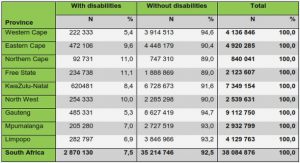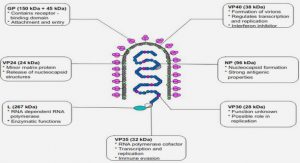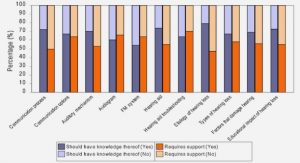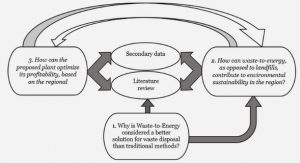Get Complete Project Material File(s) Now! »
Density functional theory on a localized basis set
Calculations with density functional theory represent an essential step towards more accurate QMC simulations. The reason is twofold. At first place, extensive benchmarks [11, 12] have proven that, compared to HartreeFock or natural orbitals, the DFT eigenstates obtained either with plain local density approximation or with hybrid energy functionals are the best single-particle starting guess for building the determinantal part of the QMC wavefunction. Besides the wavefunction, also the relaxed geometrical structure of molecules and solids at a DFT level is often used as initial point for QMC calculations, in particular when a correspondent experimental result is not available. Secondly, the physics extracted from DFT calculations represents an essential preliminary scenario for interpreting the results of more accurate many-body techniques such as QMC. Due to its higher computational cost, it is nowadays advantageous to use QMC only to tackle physical problems where the DFT description is not satisfactory and which does not require a too large number of particles in the simulation model. This is the case for all applications presented in Chap. 3 and Chap. 6 of this thesis. This trend will likely change in the near future. With the algorithms available today, DFT will not be able to benefit of the increased computational power of the next generation supercomputers (exascale computing). On the contrary, as already mentioned, QMC methods will naturally benefit from the very large number of available cores for performing realistic simulations on systems with up to 104 electrons, at least one order of magnitude more of the capability of present QMC programs.
At variance with most of the available QMC softwares which rely on external programs, the TurboRVB code used in this thesis exploits a built-in DFT package which seamlessly interfaces with the QMC software, thus using the same simulation setup and avoiding any external tool for wavefunction conversion.
The Kohn Sham equations
DFT is a theory of many-body quantum systems whose purpose is to evaluate electronic structure properties of atoms, molecules and solids by first principles.
The basic idea of DFT is fundamentally different from wavefunction-based approaches such as Hartree-Fock configuration interaction as well as QMC methods. Rather than the ground state many-body wavefunction (r1, · · · , rN), the main physical object within DFT is the local electronic density ρ(r), namely the diagonal elements of the one-body density matrix. This basic quantum mechanical quantity is defined as: ρ(r) = N Z dr2 . . . drN ∗(r, r2, . . . , rN) (r, r2, . . . , rN) (2.5).
where N is the number of electrons in the system. The constitutional tenet of DFT is that any property of a many-body system can be casted into a functional of the ground state electronic density ρ0(r). In this way the actual functional form of (r1, · · · , rN) becomes irrelevant and needs not to be explicitly specified. It can be shown that ρ0(r) is uniquely defined by the external potential Vext(r) which, in absence of external fields, only depends on the considered atomic arrangement (this goes under the name of V-representability of the electronic density). The demonstration of this simple yet revolutionary theorem is presented in the original work of Hohenberg and Kohn in Ref. [13].
Kohn-Sham problem on non-orthogonal basis set
The choice of the DFT basis set to expand KS eigenvectors should be very flexible. The most successful functional form is certainly the plane wave (PW) basis set [18, 19]. PWs do not depend on any input parameter and they are very cheap to evaluate, therefore the complete basis set (CBS) limit can be systematically reached. Furthermore, their accuracy can be arbitrarily tuned by cutting off the PW expansion beyond a certain cutoff energy.
PWs are suitable for open systems and also for solids with small simulation cells, since they naturally satisfy the Bloch theorem (see Chap. 4 for more details). However, for extended periodic systems they can become inefficient when using sizable simulation cells since, in this case, the number of PWs needed in the expansion grows proportionally to the system size.
In the case of correlated techniques such as QMC, the choice of the basis set is more delicate due to its higher computational cost. For instance, PWs expansion of singleparticle orbitals is not convenient in QMC since its computational cost grows as O(N3) with a prefactor which depends on the PW cutoff [20]. Despite recent improvements on the PWs side [21], the most common solution in QMC is the use of atomic localized orbitals. This form is often used in quantum chemistry since they yield an intuitive picture of the inter-atomic chemical bonds and they give a better description of the atomic limit. Modern QMC approaches typically use localized orbitals with Slater type (STOs), Gaussian type (GTOs) or more evolved schemes based on localized splines expansion [20, 22]. In our implementation, we use a localized basis set with GTOs. For seamlessly interfacing with the QMC software, we use the same basis set in the built-in DFT package. In order to cope with this choice, suitable algorithms must be devised to diagonalize the KS Hamiltonian within a non-orthogonal basis set, as presented in this Section.
The JAGP variational wavefunction
Since the discovery of high-temperature superconductivity in copper oxides materials [29], it became apparent the deficiency of single-particle techniques in the description of strongly correlated materials. This evidence gave a new impetus in the research on explicitly correlated methods, at first for solving lattice models connected with superconductivity, such as the multi-band Hubbard model, and afterwards also for tackling realistic systems from first principles.
Within wavefunction based methods, the most important mathematical object is the Slater determinant (SD), introduced in this context for the first time to construct the well-known Hartree-Fock (HF) approximation and used as many-body wavefunction for any independent or single-particle electron theory. We introduce this functional form in Eq. 2.11 in the context of DFT calculations.
Using the SD as ansatz for solving the many-body Schrödinger equation is convenient since it naturally includes effects arising from the antisymmetry of the many-body wavefunction. However, electronic repulsion due to long-range Coulomb electron-electron interaction is taken at the HF level and the correlation energy is zero. There are many ways for improving the SD in order to cure this problem. One widely used solution is to build the wavefunction as a linear combination of Slater determinants such in the aforementioned CC and CI methods. This approach relies on the fact that the full set of determinants constitutes a complete basis set of the whole Hilbert space.
Here we describe an alternative route. Our strategy is based on the so-called resonating valence bond (RVB) approach. RVB has been introduced for the first time in aromatic molecules by Pauling [30] and then generalized to describe metallic systems [31]. The main concept behind RVB is that singlet electron pairs forming a chemical bond between two distinct atomic sites can be subjected to an unsynchronized resonance. The superposition of these resonating bonds propagates through the molecule or the crystal and it ensures the stabilization of the electronic state if compared with the simple, non resonating HF approximation, as shown by numerical estimations of the resonance or condensation energy. Anderson [32] provided a rigorous mathematical framework for RVB theory suggesting that it could explain the physics of strongly correlated Mott insulators.
Furthermore, the RVB state can support charged bosonic excitations with zero spin. Since such excitations could exist also at high-temperature, Anderson speculated that they could be the cause of the high-temperature superconductivity displayed by copperoxides compounds [33] whose parent compound is a Mott insulator. He hypothesized that the coupling between copper and oxygen atoms could be a realization of the RVB state, however an experimental evidence of this speculation has not been found yet.
The missing ingredient: Jastrow factor
All determinantal wavefunctions such as the HF Slater determinant suffers from the absence of a correlation hole for electron pairs. This can lead to large energy fluctuations due to the Coulomb repulsion. In order to damp these fluctuations, it is common practice to multiply the determinantal part by a bosonic Jastrow factor. The Jastrow plays the role of the Gutzwiller projector in Eq. 2.23 and it disfavors double occupations of the orbitals. The analogy between JAGP and the RVB representation proposed by Anderson is thus complete.
Complementary to AGP, the Jastrow term is constructed to include dynamical electron correlation, i.e. the fraction of the correlation energy derived from charge (and thus spin) spatial motion in the system. This ensures an accurate treatment of weak intermolecular forces as Van der Waals interactions [40]. Furthermore, the Jastrow is tailored to solve the problem of wavefunction cusp conditions [41] affecting all approximate wavefunctions. Cusp conditions are constraints imposed on the derivatives of the many-body wavefunction at electron-ion and electron-electron coalescence points (namely when inter-particle distance r → 0). They neutralize the divergence of the electron-ion and Coulomb potentials at the coalescence points by forcing an equivalent and opposite divergence in the kinetic energy, as it is automatically realized with the exact wavefunction. When the correct cusps are enforced into the variational ansatz, the rate of convergence of JAGP in the basis is much increased. Therefore the inclusion of a Jastrow factor, although re25 sulting in a larger number of variational parameters, brings great benefits in term of the final cost of wavefunction evaluation. Furthermore, when selecting a Slater determinant as antisymmetric part of the ansatz, the Jastrow represents the only way to go beyond HF and include electron correlation in the system.
Pseudopotentials and lattice regularized DMC
One of the main bottlenecks of the DMC algorithm is the bad scaling with the atomic number Z. This has been proven to be of the order of ∼ Z5.5−6.5 by simulating noble gases with large atomic number within DMC [50, 51]. This fact would limit the applicability of QMC methods to the study of light elements and small extended systems. In order to overcome this issue, the core electrons need to be replaced with cheap, but accurate pseudopotentials. In this work we use pseudopotential functions specifically designed for QMC, developed by Burzatki, Filippi and Dolg (BFD) in Refs. [52, 53]. BFD pseudopotentials are freely available for many elements in Ref. [23].
Table of contents :
1 Introduction
2 Quantum Monte Carlo methods for finite systems
2.1 Introduction
2.1.1 Organization of the Chapter
2.2 Density functional theory on a localized basis set
2.2.1 The Kohn Sham equations
2.2.2 Kohn-Sham problem on non-orthogonal basis set
2.3 The JAGP variational wavefunction
2.3.1 Multi-configurational AGP ansatz
2.3.2 The missing ingredient: Jastrow factor
2.3.3 Functional forms of the ansatz
2.4 Evaluating physical observables within QMC
2.4.1 Variational Monte Carlo
2.4.2 Diffusion Monte Carlo
2.4.3 Pseudopotentials and lattice regularized DMC
2.5 Efficient wavefunction optimization
2.5.1 Stochastic reconfiguration method
2.5.2 Stochastic reconfiguration with ionic forces
2.5.3 An alternative route to derivatives: adjoint algorithmic differentiation
2.6 Conclusions
3 Applications to aqueous systems: proton transfer reactions
3.1 Introduction
3.1.1 Organization of the Chapter
3.2 Geminal embedded orbitals
3.2.1 Embedding scheme
3.2.2 Detailed procedure
3.2.3 Comparison with standard natural orbitals
3.2.4 Application to the water monomer
3.3 Proton transfer reactions made simple: the Zundel model
3.3.1 Properties of the symmetric global minimum
3.3.2 Stretching the OO distance
3.3.3 Implications for more realistic PT models
3.3.4 Properties of the symmetry-broken configurations
3.3.5 Perspectives on realistic simulations
3.4 Conclusions
4 QMC simulations of extended systems
4.1 Introduction
4.1.1 Organization of the Chapter
4.2 Localized basis DFT calculations for periodic systems
4.2.1 Primitive cell calculations
4.2.2 The Bloch theorem
4.2.3 Gaussian basis set for periodic systems
4.2.4 Generic boundary conditions
4.2.5 Numerical Brillouin zone integration
4.3 Periodic systems with QMC
4.3.1 Many-body Hamiltonian in supercell calculations
4.3.2 Twisted boundary conditions
4.3.3 Complex JAGP ansatz
4.4 Single-point QMC calculations with complex wavefunctions
4.4.1 Variational Monte Carlo
4.4.2 Fixed-phase diffusion Monte Carlo
4.5 Wavefunction optimization with periodic systems
4.5.1 Stochastic reconfiguration with complex wavefunction
4.5.2 Twist independent parameterization of the pairing function
4.6 Conclusions
5 Alternative approaches to reduce finite size effects in QMC solid state calculations
5.1 Introduction
5.1.1 Organization of the Chapter
5.2 Kinetic energy shell fluctuations
5.3 Twist averaging techniques
5.4 Special twist methods
5.4.1 Theoretical foundations
5.4.2 The Baldereschi method
5.5 Exact special twist procedure
5.5.1 Detailed procedure
5.5.2 Benchmark calculations on 3D homogeneous electron gas
5.6 Realistic systems with the EST method
5.6.1 Many-body errors correction
5.6.2 Total energy
5.6.3 Comparison of errors in the EST method
5.6.4 Energy derivatives
5.7 Flavor twist method
5.8 Conclusions
6 Applications to iron-based superconductors: the case of iron selenide
6.1 High-temperature superconductivity from first principles
6.1.1 Introduction
6.1.2 QMC: an appropriate first-principle framework
6.1.3 The case of FeSe: simplicity does not exclude complexity
6.1.4 Organization of the Chapter
6.2 Technical details of the QMC calculations
6.2.1 Two complementary QMC flavors
6.2.2 Simulation setup: supercells and magnetic phases
6.2.3 Wavefunction and basis set
6.2.4 Finite-size effects and lattice extrapolation
6.3 Structural properties
6.4 Magnetic properties
6.4.1 FeSe energetics under pressure
6.4.2 Comments on the paramagnetic phase
6.5 Interaction between structure and magnetism
6.5.1 Relevance of stripe-like magnetic orderings
6.5.2 Connection with Hund’s rule coupling
6.6 Conclusions
7 Conclusions and outlook
Bibliography






